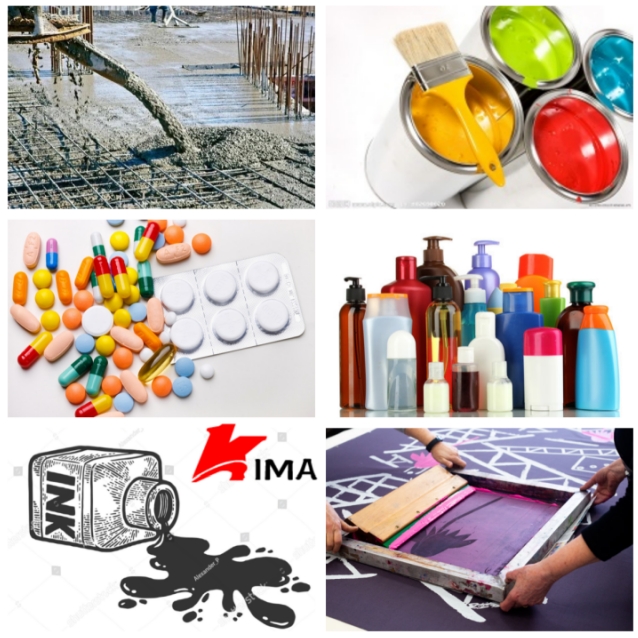Hydroxypropyl Methylcellulose (HPMC) is a non-ionic cellulose ether made by chemical modification of natural polymer cellulose. It has a wide range of application value in medicine, construction, food, cosmetics, coatings, plastics and other fields.
1. Basic properties of HPMC
Hydroxypropyl methylcellulose is a white or off-white odorless, tasteless, non-toxic powder with good solubility. It can be dissolved in cold water to form a transparent colloidal solution, but it is insoluble in hot water, ethanol, chloroform and other organic solvents. Its molecules contain hydrophilic groups, have good film-forming, emulsifying, water-retaining, thickening and adhesion properties, and have good thermal stability.

2. Main uses of HPMC
Construction industry
The construction industry is one of the main application areas of HPMC. In dry mortar, HPMC is used as a thickener, water-retaining agent and binder to improve construction performance, enhance mortar strength, improve water retention capacity, and prevent mortar cracking and falling off. Its specific uses include:
Tile adhesive: increase bonding strength and increase the open time during construction.
Putty powder: enhance workability and prevent cracking.
Self-leveling floor material: as a water retainer and lubricant, improve fluidity and self-healing ability.
Insulating mortar: enhance consistency and viscosity to ensure material adhesion.
Coating: plays a role in thickening, suspension, emulsification and stabilization in latex paint.
Pharmaceutical industry
HPMC is one of the most widely used excipients in the pharmaceutical industry. It is often used in tablets, capsules, sustained-release drugs, etc., with high safety and good biocompatibility:
Tablet coating material: used for coating of controlled-release and sustained-release tablets, which can control the release rate of drugs in the gastrointestinal tract.
Capsule shell: as a capsule material derived from plants, it replaces gelatin to make plant capsules and is suitable for vegetarians.
Thickener: used as an adhesive or tear substitute in eye drops to increase the viscosity and retention time of eye drops.
Food Industry
In the food industry, HPMC is a safe food additive, usually used as an emulsifier, thickener, stabilizer and water retainer:
Bread, cake and other baked products: improve taste, delay aging and retain moisture.
Quick-frozen food: maintain food shape and texture.
Low-fat food: as a fat substitute, giving good taste and mouthfeel lubricity.
Cosmetics industry
HPMC is also widely used in personal care products such as skin care products, shampoo, toothpaste, shaving cream, etc.:
Lotions and creams: used as emulsifier stabilizers and thickeners to enhance the application feel.
Shampoo and shower gel: improve the stability of foam and product consistency.
Toothpaste: as an adhesive and thickener, making the paste uniform and easy to extrude.

Coatings and ink industry
In the coatings industry, HPMC can be used as a dispersant, film former, emulsifier and stabilizer, and is widely used in latex paints and water-based coatings:
Improve the storage stability of coatings.
Increase the construction and smoothness of coatings.
Reduce the precipitation of pigments and fillers.
Plastics and other industries
In the plastics industry, HPMC can be used as a film former, lubricant and release agent; in agriculture, it can also be used as a slow-release coating material for pesticides and fertilizers to prolong their effects; in the printing and dyeing and papermaking industries, it can be used as a sizing agent and thickener to improve product quality.
Hydroxypropyl methylcellulose (HPMC), as a non-ionic cellulose ether with excellent performance, plays an irreplaceable role in many industries due to its good water solubility, stability, thickening and non-toxicity. From construction and building materials to medicine and food, from personal care to industrial manufacturing, HPMC is widely used and continues to be valued because of its versatility and adjustability. With the continuous development of green and environmentally friendly materials, the market potential and development prospects of HPMC will be broader.
 English
English 日本語
日本語 français
français Deutsch
Deutsch Español
Español italiano
italiano русский
русский português
português العربية
العربية Türkçe
Türkçe Nederland
Nederland





